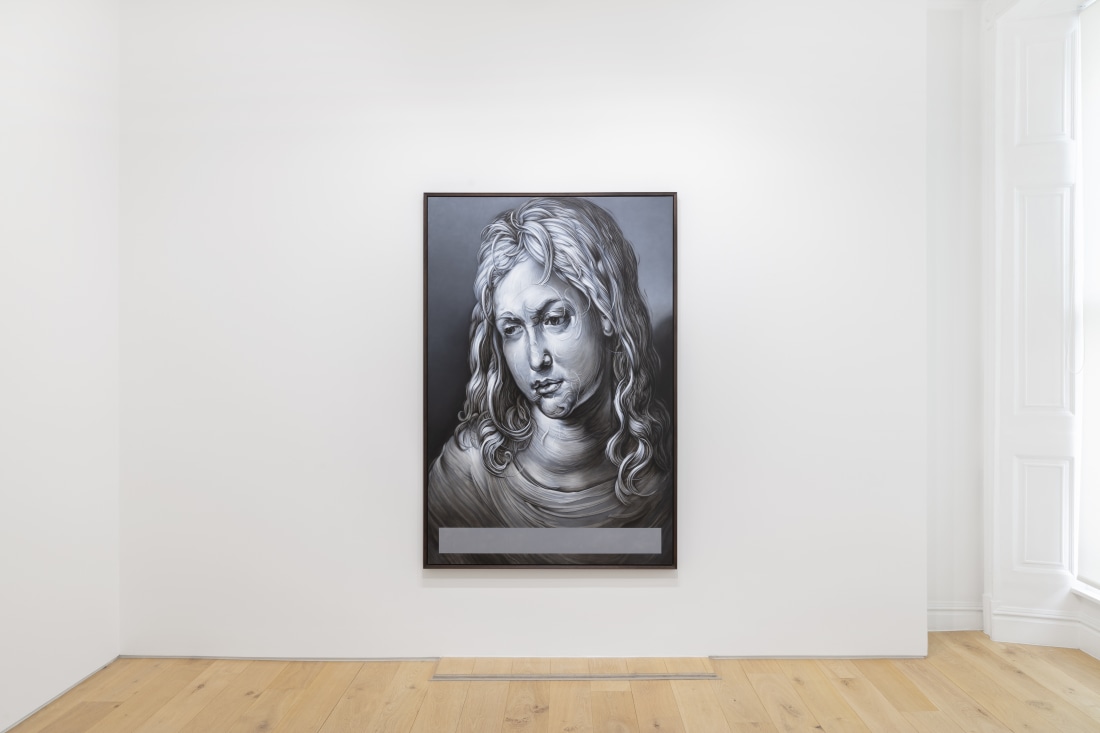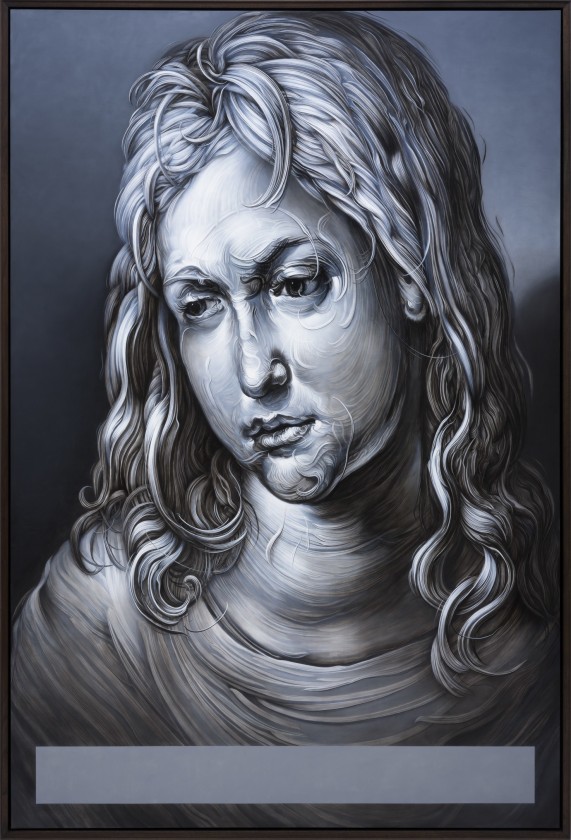Potential Colour: Galerie Max Hetzler, London
‘Grey is nothing, not white, not black. Something in between. [...] Something free.’
– Günther Förg
Galerie Max Hetzler, London, is pleased to present Potential Colour, a group exhibition of works by Darren Almond, Glenn Brown, André Butzer, Günther Förg, Hans Josephsohn, KAWS, Albert Oehlen, Edmund de Waal, Rebecca Warren, Grace Weaver and Toby Ziegler. Taking grey as its starting point, the exhibition explores the gradations of this nuanced shade, from black to white and the space in-between.
At once transparent and opaque, grey hovers at the threshold between reality and representation, absence and presence, past and present. Contained within its veiled contours is the potentiality of all colour. Dissolving white and black, grey is a tool for erasure or overpainting, for blotting out or leaving ghostly traces; yet it also serves to articulate passages and mould forms. This exhibition focuses on the ambiguity and evanescent nature of the monochrome palette as one that is comprised simultaneously of every hue and none.
A visceral surge of colour erupts from the grey expanse of André Butzer’s (b. 1973) La Chasse (Mis en Bouteille au Château), 2011. The image is a poignant example of the artist’s pursuit of the colour grey, which he begun with his pivotal work Mörder in 1999, continued in the ‘Haselnuss’ series in 2003, and culminated with his initial ‘N-Paintings’ (2010–2012). ‘Grey,’ Butzer has stated, ‘is the great potency of all colours, the destination of colour.’ 1 As the concentrated sum of chromaticity itself, grey becomes a site where all colour is latently stored.
Such hints of colour are encapsulated in the ‘Grey Paintings’ of Günther Förg (1952–2013), initiated in 1973. Gesturally dense, the grey negates any sense of representational allusion, yet at the same time, the works appear porous, with glimmers of light seeping through the crosshatching. Inspired by Edvard Munch, this latticework simultaneously highlights Förg’s lifelong engagement with architecture and the Modernist grid. In his own ‘Grey Paintings’, initiated in 1997, Albert Oehlen (b. 1954) plays with the abstract / figurative divide, as faces and forms appear to shift into focus from an ostensibly non-representational sea of grey. In Student II, 1997, the ghostly head of a woman emerges from a densely painted ground, subverting expectations. Of these works, the artist has described a desire ‘to artificially heighten the lust for colour’.2
The raw, unfired clay that Rebecca Warren (b. 1965) has been using in her work since 1998 dries a very pale grey, slightly bluish or yellow depending on the light. Her sculpture Some Mothers Of Invention 1, 2013, is an ensemble of strange ambiguity. In its entirety, it is cartoonishly phallic with its intermediary MDF trapezoid collar covered in clay which has dripped over its edges, and below that a rosy pink plinth. The rotund clay form has, in its concise modelling, an exaggerated likeness to a nut or buxom derrière: aloof in its grey grandeur, it is ample, grave and amusing.
This shifting of form is encapsulated by Darren Almond (b. 1971) in his new body of ‘Rag Paintings’. Created in homage to Lucian Freud, the works depict the folds and forms of the rags which he used to wipe his paintbrushes before discarding them on his studio floor. Presenting feathery markings and flutters of colour, the paintings explore the idea of cloth as both a remnant and a transformative medium. Modes of translation similarly operate in Toby Ziegler’s (b. 1972) practice. In Emotional Defrag, 2015, he digitally-manipulates an original source image before rendering it in oil paint on aluminium, to create an ambiguous pictorial space. Removing areas of paint with an electric sander, Ziegler reveals passages of the metal beneath, in a push and pull of creation and negation. In Edmund de Waal’s (b. 1964) pure white vitrine, a house full of music, II, 2023, the artist encompasses the simplicity and harmony of the monochrome. The rhythmically arranged composition is punctuated with glimmers of silver, imbuing the work with a pearlescent glow.
The drawn line comes to the fore in UNTITLED, 2015, by KAWS (b. 1974). Working in grey acrylic on white paper, the artist portrays Snoopy from Charles M. Schulz’s comic strip, Peanuts. Enlarging the linework almost beyond recognition, KAWS abstracts and overlays the original, replacing the cartoon character’s eyes with his signature ‘X’ motif, as he hints towards its ubiquity in the collective consciousness. In new work by Grace Weaver (b. 1989), the artist similarly conjures her protagonist through a series of reductive, sweeping lines. Painting wet-on-wet on a washy ground, Weaver draws from early Greek imagery of mourners to portray a woman with hands raised theatrically above her head. Balancing abstraction and figuration in Untitled (Ruth), 1963, Hans Josephsohn (1920–2012) presents a standing nude figure rendered in brass, which captures something of the raw essence of the human form. Revealing traces of the artist’s hand, the sculpture’s tactile surface and varied patina evoke geological formations in colour, texture and scale as it shifts through deep charcoal and umber to golden, light-filled hues.
In his aptly titled painting, The Untitled, 2024, Glenn Brown (b. 1966) explores notions of absence and aura. Beneath an androgynous, Jesus-like figure, is an empty grey rectangle: suggestive of an epitaph left blank, it awaits praise or judgement from the viewer. In contrast to the artist’s usual vivid palette, the work is painted entirely in grisaille, emphasising each delicate swirl and whorl that together forms his enigmatic subject.

